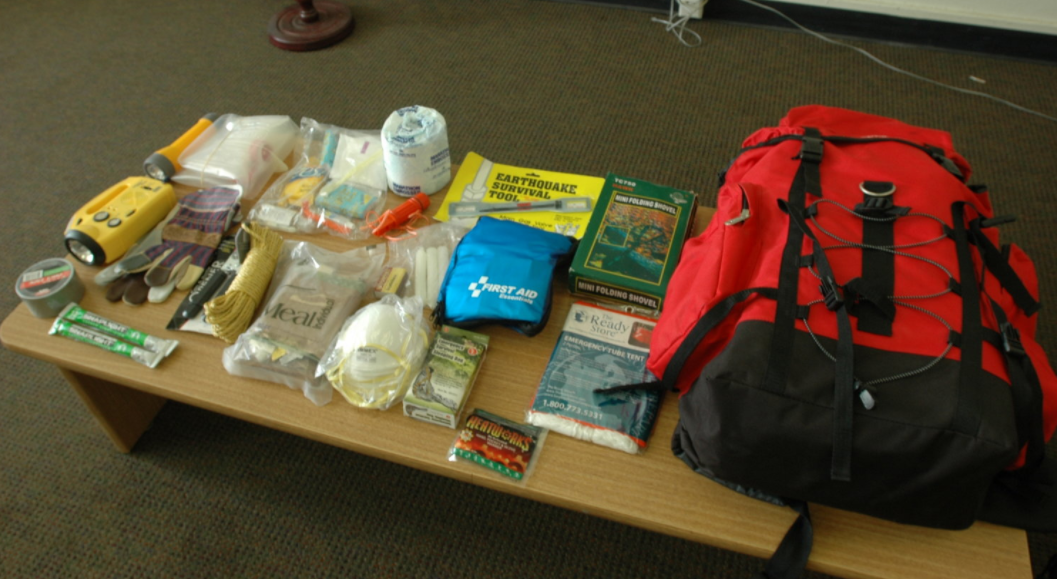Preparing a survival kit just in case SHTF at work
12/06/2018 / By Mary Miller

A disaster can strike at any moment, even when you’re at work. A SHTF scenario will not wait for you to clock out of your workplace before occurring. It can simply happen without warning. A 72-hour emergency kit can go a long way in improving your chances of survival, wherever you are. At the very least, it can help mitigate any problems you might face. Here’s what you need for a survival kit at work, in case SHTF. (h/t to ModernSurvivalBlog.com.)
Bug-out bag
A survival kit contains a few essential items to help you get through the first few days after a disaster. It can also double as your bug-out bag. It should contain your necessities, such as a first aid kit, food and water, clothes, and other personal items. A heavy duty backpack is ideal for you to use as your bug-out bag and/or survival kit. You can easily sling it over your shoulder and carry it wherever you need to go, leaving your hands free for action.
Food and water
You will need enough food and water to last you for at least three to five days. Canned meats, such as beef and chicken can be useful, but also try to include food items that do not require cooking, such as ready-to-eat foods. For snacks, you might want to have some dried beef jerky, energy food bars, chocolate bars, and peanut butter. You can eat these snacks for a quick burst of energy or a calorie boost. For water, you can just pack a few bottles of water, just enough for you to carry, but not too much to weigh you down. If you can, try to have a small water filter with you as well. You never know when you might run out of clean drinking water. A few tea bags can also help to calm you down during stressful situations. Other useful items include a spoon, fork and knife set, and a manually operated can opener.
Sponsored solution from the Health Ranger Store: Lab-verified Nascent Iodine solution is a dietary supplement that provides your body with supplemental iodine to help protect your thyroid during radiation exposure. Nuclear accidents such as Fukushima (or nuclear war) can expose your body to radioactive iodine-131, a dangerous radioisotope. Pre-loading your system with stable iodine occupies the iodine receptor sites on your organs, causing your body to naturally expel radioactive iodine you may have been exposed to through air, food, water or milk products. This defensive strategy is recommended by nearly all health authorities, worldwide, including the Nuclear Regulatory Commission. Discover more at this link.
Medical supplies
You should have a basic first aid kit with the essentials, such as bandages, disinfectant alcohol, clean gauze and other basic necessities. (Related: These are the items that you need in your first-aid kit if you just want to carry the bare minimum.)
If ever SHTF, your access to medication might be severely limited. If you need prescription medications for treating chronic health conditions, keep an emergency supply of them at hand. Disasters can put you in stressful situations, so you might want to also include pain relievers.
Clothes
Of course, you’ll want to have a comfortable change of clothes with you. This way, you won’t be stuck in your office attire when SHTF. Don’t forget a clean change of underwear, too. Hygiene is still important during disasters. In case you need to make a rapid evacuation, it is recommended that you have a pair of comfortable walking shoes. Depending on the season, you might also want to include season appropriate outerwear, such as a jacket, a pair of gloves, or a hat. For rainy weather, keep a rain poncho or an umbrella in your kit as well.
Toiletries
Again, hygiene is still important during disasters as this can help protect you against germs and bacteria, especially if you have to evacuate to a crowded area. Keep your hands clean with hand soap and hand sanitizer. Tissue paper is useful for cleaning up messes. Remember to include a toothbrush and some toothpaste.
Miscellaneous personal items
These are just a few items that can come in handy. A blanket is useful if you have to sleep somewhere and it can also keep you warm. If the power grid fails, you will need a source of light, such as an LED flashlight or headlamp. Glow sticks and lighters also provide light without a need for batteries. An emergency whistle can make noise if you need to get someone’s attention. A face mask can protect you from smoke, airborne debris or, viruses. Don’t forget to protect yourself with a Swiss army knife or a pocket knife.
Learn how to stay prepared for any situation by reading more articles at Preparedness.news.
Sources include:
Tagged Under: bug out, bug out bag, chaos, Collapse, disaster, emergencies, first-aid kit, medical supplies, off grid, preparedness, prepper, prepping, prepping tips, self-defense, SHTF, SHTF at work, survival, survival gear, survival kit, survivalist




















